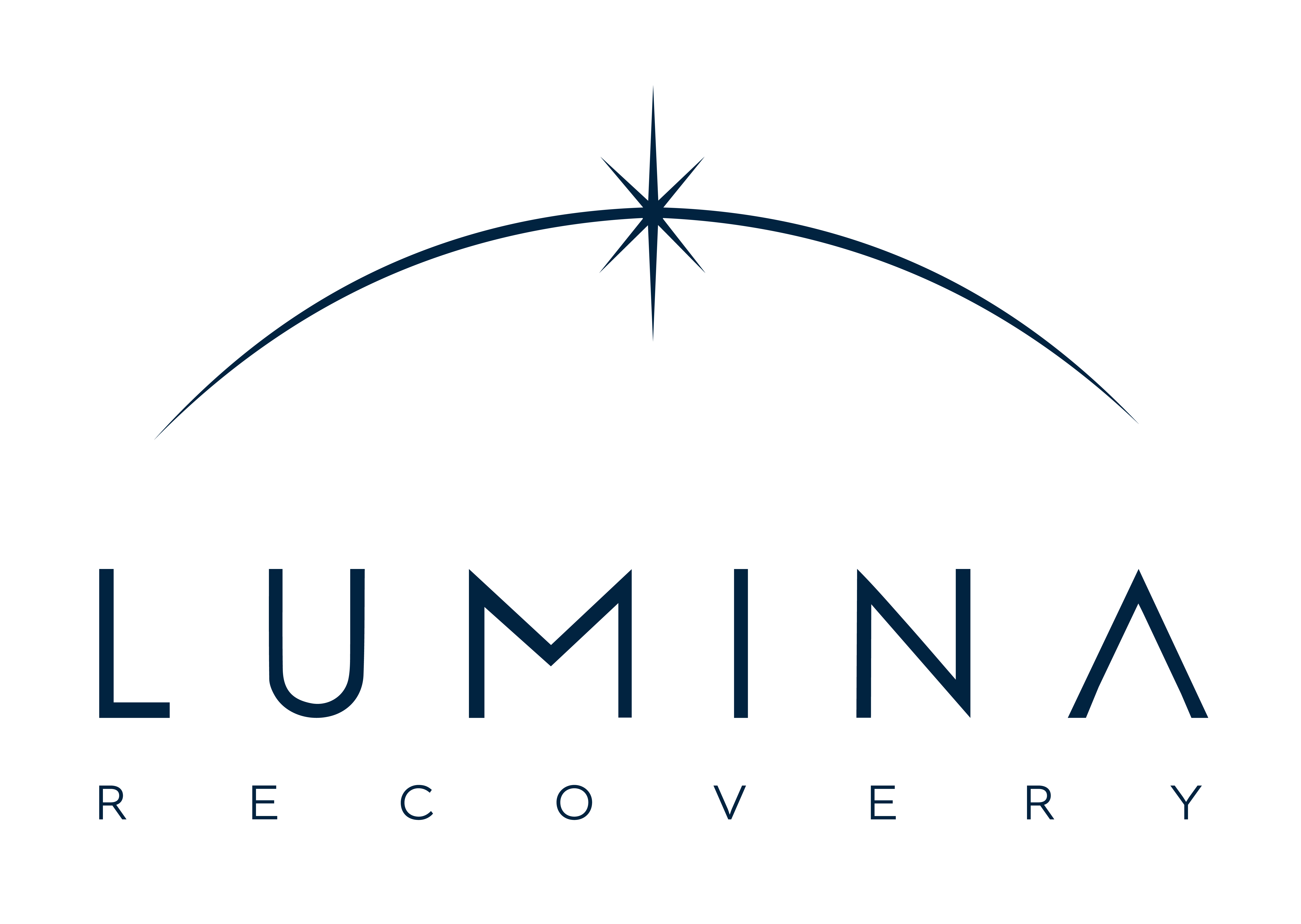
Our Addiction Resources
Navigating the world of addiction and recovery can be overwhelming. We’re here to provide clear, compassionate education and guidance. From practical advice for maintaining sobriety to informational guidance on the long-term effects of substance abuse, our content is a beacon of hope and understanding.
Our Team is Ready are ready to take your call
Call us Today!
or we can call you. Fill out form below
Our Blog

Your Guide to Temazepam Addiction
Temazepam is a commonly prescribed medication used to treat insomnia. It’s a benzodiazepine, a class of drugs known for their sedative effects, which can help people who struggle with falling or staying asleep.
Like many prescription medications, temazepam carries the risk of addiction, particularly when misused or taken for extended periods. It is important to be educated about what temazepam is, how it works, its addiction potential, signs of dependency, health risks, withdrawal symptoms, and why seeking professional help is crucial for recovery.
What Is Temazepam?
Temazepam is a prescription medication commonly used to treat severe insomnia by calming the brain and nervous system. This sedative effect helps regulate sleep cycles, making it effective for short-term relief of sleep disorders. However, temazepam is not recommended for long-term use due to its potential for dependency.1
Even when taken as prescribed, the body can build a tolerance to temazepam, meaning that over time, higher doses may be required to achieve the same level of effectiveness. This increasing tolerance is what raises the risk of developing an addiction.
Is Temazepam Addictive?
Temazepam addiction happens when the body develops both a physical and psychological dependence on the drug. Initially, it may start with a legitimate prescription, but higher doses may be needed to achieve the same calming and sedative impact as the body adapts to its effects.
As tolerance develops, individuals might begin taking temazepam more frequently or in larger amounts than prescribed, significantly increasing the risk of addiction. Temazepam addiction potential stems from how the drug influences the brain’s reward system.
Temazepam enhances the activity of gamma-aminobutyric acid (GABA), a neurotransmitter responsible for promoting relaxation. Over time, the brain may become dependent on these elevated GABA levels, making it difficult for a person to feel calm without the drug.2
Signs of Temazepam Addiction
Benzodiazepine addiction, including dependency on temazepam, can develop over time, often without the individual even realizing it. Taking too much temazepam, running out of your prescription early, or feeling that you can’t function without the medication may all be signs of a developing benzodiazepine use disorder. These behaviors are important to recognize, as they can signal that casual use is transitioning into dependence.
Spotting temazepam addiction symptoms in others can be challenging. Addiction can manifest through changes in appearance, behavior, or emotional stability, affecting relationships and work performance. Chronic misuse of temazepam can lead to a range of physical and psychological symptoms, including: 3
- Anxiety
- Insomnia
- Appetite Loss (Anorexia)
- Headaches
- Weakness
These symptoms, combined with a growing reliance on temazepam to function normally, are strong indicators of addiction. Recognizing these signs early can help prevent further harm and encourage seeking professional treatment.
Health Risks of Long-Term Temazepam Use
In addition to the risk of dependency, long-term use of temazepam can lead to a variety of serious health issues. Regular use of benzodiazepines, such as temazepam, may cause:3
- Depression and Anxiety
- Cognitive Impairment
- Loss of Motivation
- Personality Changes
- Sleep Disturbances
- Irritability and Aggression
- Digestive Issues
- Headaches and Skin Rashes
- Weight Gain
These health risks highlight the dangers of continued temazepam misuse and the importance of seeking help to avoid further damage to both mental and physical well-being.
Withdrawal Symptoms
If you suddenly stop or significantly reduce your dose of temazepam, even if you’ve been using it exactly as prescribed by a doctor, you may experience withdrawal symptoms. The risk of withdrawal increases the longer you’ve been using the drug, and the symptoms can be both physical and psychological.
Temazepam withdrawal can be uncomfortable, and in some cases, dangerous without medical supervision. Symptoms can vary in intensity and duration, but they often include:3
- Anxiety and Depression
- Dizziness or Unsteadiness
- Nausea and Vomiting
- Head, Neck, or Facial Pain
- Sensitivity to Light, Sound, and Smells
- Sleep Problems or Nightmares
- Stomach Cramps and Loss of Appetite
- Ringing in the Ears (Tinnitus)
- Loss of Sex Drive
These symptoms can make the withdrawal process difficult, which is why it’s essential to seek professional support when discontinuing temazepam. A medically supervised detox can help ease these symptoms and ensure a safer, more comfortable recovery experience.

Seeking Professional Help
If you or a loved one is struggling with temazepam addiction, the most important step is to seek professional help. Addiction is a complex disease, and overcoming it requires more than willpower alone. Treatment options for temazepam addiction typically involve a combination of medical detox, behavioral therapies, and support groups.
Medically Assisted Detox: A supervised detox ensures that withdrawal symptoms are managed safely and effectively, reducing the risk of severe complications during the withdrawal process. It also provides medical and emotional support to make the experience more comfortable and successful.
Cognitive Behavioral Therapy (CBT): CBT helps individuals understand the thoughts and behaviors contributing to their addiction and provides tools for developing healthier coping mechanisms.
Dual Diagnosis Treatment: For those who struggle with both addiction and a co-occurring mental health disorder, dual diagnosis treatment addresses both issues simultaneously to provide more comprehensive care.
Support Groups: Participating in support groups, such as Narcotics Anonymous, can offer community support and accountability during the recovery process.
Professional treatment centers are equipped to handle the complexities of benzodiazepine addiction, providing both the medical care and emotional support necessary for a successful recovery.
Overcome Temazepam Addiction With Lumina Recovery
Temazepam is a powerful medication that can offer relief from insomnia, but its addictive potential poses significant risks. If you suspect that you or a loved one may be struggling with temazepam addiction, it’s essential to act quickly. Recognizing the signs of dependency, understanding the health risks, and seeking professional help are the first steps toward recovery.
Lumina Recovery offers inpatient and outpatient treatment options tailored to meet individual needs, ensuring a supportive and effective path to recovery.
If you or a loved one is struggling with temazepam addiction, contact Lumina Recovery today for compassionate and expert care.
Sources:

What Is the Drug Ceiling Effect?
The drug ceiling effect is a critical concept in understanding how certain medications, especially opioids, impact the body and mind, especially for individuals dealing with addiction. The ceiling effect of a drug refers to the point at which increasing the dosage of a drug no longer increases its effects.
While the drug still remains active in the system, there is a limit to the relief or benefit it can provide, which can be particularly important in pain management. Understanding this effect is crucial for both individuals struggling with addiction and their concerned loved ones.
What Is the Ceiling Effect of a Drug?
The ceiling effect drugs definition refers to the phenomenon where a drug reaches its maximum effect, and no further benefits can be gained by taking higher doses. This occurs with many types of medications, including opioids, which are often prescribed for pain relief.1
However, when an individual takes more of the drug, expecting greater pain relief or euphoria, they might not achieve these desired outcomes beyond a certain point. This limitation is what’s known as the ceiling effect of drugs.
Ceiling Effect on Opioids
In opioids, the ceiling effect is particularly pronounced in drugs such as buprenorphine, which is commonly used in opioid addiction treatment. Buprenorphine has a ceiling effect, meaning that increasing the dose beyond a certain point won’t result in more profound opioid effects, such as increased euphoria or pain relief.2
This can be beneficial in addiction treatment because it limits the risk of overdose. For individuals struggling with addiction, buprenorphine’s ceiling effect can help mitigate the risks associated with opioid use, including overdose. However, it also comes with challenges, particularly for individuals seeking more intense effects as they build tolerance.
Drug Tolerance and Addiction
One of the challenges posed by the ceiling effect is its relationship to drug tolerance. When a person takes opioids over a prolonged period, their body becomes accustomed to the drug’s presence, requiring more of the drug to achieve the same effects.3
When the ceiling effect kicks in, even increasing the dose won’t provide additional relief or euphoria. This can lead to frustration, particularly for individuals with addiction who may chase the drug’s initial high.
As individuals attempt to overcome the ceiling effect of drugs, they may increase their dosage beyond safe limits or turn to other drugs to achieve a stronger effect. This can lead to a dangerous cycle of polydrug use, where multiple substances are combined to bypass the limitations of a single drug’s ceiling.
Psychological Impact of the Ceiling Effect
The psychological impact of the ceiling effect on individuals with addiction is often profound. Once someone realizes that increasing their dosage of a drug does not yield the same relief or desired effect, they may experience frustration, anxiety, or desperation.
These feelings can drive individuals to unsafe behaviors, such as combining drugs or experimenting with illicit substances to reach a similar high or relief they initially felt.
The ceiling effect of drugs, in this context, becomes a double-edged sword: it limits therapeutic effectiveness but, in doing so, pushes individuals toward more dangerous patterns of behavior.
Ceiling Effect on Pain Management
In medical settings, the analgesic ceiling effect is a key factor in opioid pain management. Doctors may prescribe drugs with a ceiling effect, like buprenorphine, to reduce the risk of overdose and long-term dependence.2
However, for individuals who are already addicted or misusing opioids, this ceiling can feel like a frustrating barrier to pain relief or the euphoric effects they’re chasing.
It’s important to note that opioids without a ceiling effect, such as pure opioid agonists (like fentanyl), pose an even greater risk because there’s no limit to the effects they can produce as the dose increases. This makes them particularly dangerous for individuals with addiction, as there’s no natural stopping point to prevent overdose.

Strategies for Managing Addiction in the Face of the Ceiling Effect
For individuals struggling with addiction in light of the ceiling effect, there are several strategies to consider:
Medical Supervision
Working closely with a healthcare provider is essential for anyone using drugs with a ceiling effect. A doctor can monitor dosage levels, suggest alternatives when a drug becomes less effective, and manage potential side effects. In cases where addiction is present, a healthcare provider may recommend medically supervised detox or addiction treatment programs to help the individual break free from drug dependency.
Alternative Therapies
In pain management, non-opioid medications, or treatments such as cognitive behavioral therapy (CBT) and physical therapy, can offer relief without the risks associated with opioids’ ceiling effect. For anxiety, non-drug alternatives like mindfulness, talk therapy, and certain antidepressants may be effective without the same risk of addiction.
Education and Support
Educating individuals and their loved ones about the ceiling effect of drugs can prevent dangerous behavior. Understanding that increasing the dosage beyond a certain point is not only ineffective but also dangerous can reduce the urge to self-medicate or combine drugs.
Polydrug Awareness
Knowing the risks of combining substances is vital. If someone shows signs of using multiple drugs to overcome the ceiling effect, seeking help immediately can prevent potentially fatal consequences.
Find Safe, Effective Support for Addiction Recovery With Lumina Recovery
Understanding what is the ceiling effect of a drug is vital for anyone using or overseeing the use of opioids. The ceiling effect serves as both a safeguard and a warning, highlighting the limits of drug efficacy while underscoring the dangers of misuse and addiction. With the right education and support, it is possible to manage addiction effectively and safely.
Lumina Recovery offers medication-assisted treatment (MAT) for opioid addiction, using evidence-based approaches to support long-term recovery and well-being.
If you or a loved one is struggling with addiction and the challenges of the ceiling effect, contact Lumina Recovery to begin the journey toward healing.
Sources:

Managing Mental Health During an Election Year
The period leading up to an election can be an especially stressful time. For those dealing with addiction or in recovery, the anxiety and tension surrounding election news can add to a heavy emotional burden for some individuals.
Social media, news outlets, and even personal conversations are filled with heated debates and polarized opinions, which may feel overwhelming. For both individuals struggling with addiction and their loved ones, maintaining mental health during an election year is essential to personal well-being and sobriety.
Here are some strategies for managing your mental health during an election year, helping you stay grounded and focused despite the noise.
1. Understand How Politics Can Affect Mental Health
Election cycles can have a profound impact on mental health, often triggering stress, anxiety, and even depression. For people already dealing with personal challenges like addiction recovery, the political climate can amplify feelings of uncertainty and overwhelm.
But how do politics affect mental health, particularly for those sensitive to external stressors? Constant exposure to politically charged content can fuel negative emotions, making it harder to focus on self-care and recovery goals.
Election-related stress often comes from feeling powerless over larger societal issues, disagreements with friends and family, or fearing the outcome of a close race. This heightened emotional state can make it harder to maintain balance and peace of mind.
Recognizing that politics and mental health are closely linked is the first step in creating a plan to manage these emotions and avoid potential pitfalls.
2. Set Boundaries with News and Social Media
One of the best ways to manage anxiety and depression related to election stress is by setting clear boundaries with news consumption and social media. While staying informed is important, overloading yourself with constant updates can lead to information fatigue.
Aim to limit how often you check the news or scroll through social media platforms, especially during emotionally charged moments.
Consider allocating specific times to catch up on news, rather than passively consuming it throughout the day. You might even set a timer for 20 minutes in the morning and 20 minutes in the evening to prevent overexposure. Outside of those time blocks, focus on activities that bring you peace and joy, such as hobbies, exercise, or spending time with supportive loved ones.
3. Practice Mindfulness and Stress-Reduction Techniques
Maintaining your mental health during an election year requires proactive efforts to reduce stress and remain mindful. Mindfulness practices, such as meditation, deep breathing exercises, and journaling, can be extremely helpful in reducing political overwhelm.
These tools can help you stay present, focus on your immediate environment, and manage any distressing thoughts about the election.
If you’re feeling triggered or overwhelmed by political conversations or media, take a few moments to practice deep breathing or a short meditation. These quick interventions can help regulate your nervous system and bring you back to a calmer state of mind.
4. Limit Political Conversations with Friends and Family
Political discussions with friends or family can sometimes lead to tension, particularly if opinions differ. These conversations can be draining and leave you feeling emotionally exhausted or upset. It’s perfectly okay to set boundaries and let others know that you’d prefer to avoid discussing politics.
If you do find yourself in a political conversation, practice healthy communication. Rather than engaging in debates, listen actively and try to steer the discussion toward neutral ground. When you feel overwhelmed, politely excuse yourself from the conversation to protect your mental health. Maintaining peace of mind is more important than winning an argument or trying to change someone’s viewpoint.

5. Prioritize Your Well-Being
Stress has a big impact on physical and mental health, which is why prioritizing your well-being is crucial. Make self-care a daily practice, and remind yourself that it’s okay to step away from political discussions or the media if they are negatively impacting your mental health. This includes focusing on physical well-being through exercise, balanced nutrition, and adequate sleep.
During an election year, it’s easy to get swept up in the urgency of political news, but making time for self-care can help you maintain a healthier perspective. Whether it’s going for a walk, taking a break from social media, or simply sitting quietly with a cup of tea, these moments of calm can provide much-needed relief.
6. Focus on What You Can Control
Feelings of powerlessness during an election cycle can contribute to anxiety and depression. One way to combat this is by focusing on what you can control. You may not be able to change the entire political landscape, but you can take small steps that make a difference.
Consider getting involved in your community, volunteering for causes you care about, or encouraging others to vote. These actions can provide a sense of empowerment and reduce feelings of helplessness. By focusing on productive activities, you’ll also reinforce your sense of purpose and avoid spiraling into political overwhelm.
7. Seek Support When Needed
If election-related stress becomes too overwhelming, don’t hesitate to seek support. Whether it’s through a therapist, support group, or loved ones, talking through your concerns can help alleviate some of the anxiety you may be feeling. There’s no shame in reaching out for help, especially during a period that’s stressful for many people.
Many people find comfort in discussing their feelings with others who are experiencing similar concerns. If you’re in recovery or supporting someone through addiction, these conversations can also reinforce your focus on maintaining sobriety and mental well-being.
Find Peace During Stressful Times With Lumina Recovery
The election year can feel like a whirlwind of emotions, especially for those dealing with addiction or supporting someone through recovery. Managing your mental health during this time is crucial to staying centered and focused on personal growth.
Lumina Recovery’s dual diagnosis and therapy services provide holistic support for individuals managing both addiction and mental health challenges, offering tailored strategies to navigate high-stress periods like an election year.
If election stress is affecting your mental health or recovery, contact Lumina Recovery for the support you need.

What Does It Mean to Surrender in Addiction Recovery?
Addiction can feel like a never-ending battle, overwhelming the body, mind, and soul. For many, the idea of “surrender” might seem like giving up or admitting defeat. However, in the context of addiction recovery, surrender is a crucial step toward healing.
Surrendering in recovery means accepting that control over addiction has been lost and acknowledging the need for help. This concept is central to many recovery programs, especially 12-step programs like Alcoholics Anonymous (AA), where surrender is the foundation of lasting change.
Defining Surrender in Recovery
When someone hears the word “surrender,” they often think of giving up power or admitting weakness. But in recovery, surrender is about strength and willingness. It’s about letting go of the illusion of control over addiction and admitting that help is needed.
Addiction takes over a person’s life mentally, physically, and emotionally, and it can be challenging to accept that no matter how hard someone tries, they cannot beat it alone. This is where surrendering in recovery comes in.
By surrendering, individuals release themselves from the exhausting struggle of trying to control their substance use on their own. It’s not about giving up—it’s about realizing that recovery is possible with support and a structured plan. This acceptance can be incredibly freeing, providing a new path toward healing.
The Role of Surrender in AA
Alcoholics Anonymous (AA) is a well-known 12-step program that has helped millions of people worldwide. The concept of surrender is integral to AA, and it is introduced early in the process. The first step of the 12-step program asks participants to admit that they are powerless over alcohol and that their lives have become unmanageable. This admission is the foundation of surrender in AA.
In AA, surrender doesn’t mean relinquishing personal responsibility. Instead, it’s about acknowledging that addiction has taken control and that outside help is necessary. The program encourages participants to surrender to a higher power (whatever that may mean for each individual) and trust in the recovery process.
By doing so, individuals begin to shed the guilt, shame, and denial that often accompany addiction, allowing them to move forward with clarity and purpose.
Surrendering to the Recovery Process
For many people, the act of surrendering to the recovery process is one of the hardest steps. Addiction often convinces individuals that they can “manage” their substance use or quit on their own. But recovery requires letting go of this false sense of control. Surrendering in recovery means opening up to the possibility of change and trusting the process, even when it’s uncomfortable or challenging.
Accepting help is a critical part of surrender. This could mean attending therapy, participating in support groups, or engaging with a 12-step program. It requires vulnerability and the willingness to follow guidance from professionals and peers who have been through the same journey. By surrendering, individuals are no longer isolated in their struggle but become part of a community that provides support, encouragement, and accountability.

5 Benefits of Surrendering in Recovery
Surrendering in recovery can be life-changing. It helps individuals break free from the exhausting cycle of trying to manage addiction on their own. This new mindset opens the door to healing by making space for acceptance, growth, and transformation. Some key benefits include:
- Reduced anxiety and stress. Constantly trying to control addiction can be mentally and emotionally draining. Surrendering releases the burden of control, reducing anxiety and stress.
- Increased accountability. Once someone surrenders to the recovery process, they become accountable to a support system. This accountability helps them stay on track and make healthier choices.
- Deeper relationships. Surrender fosters deeper connections with others in recovery. Being vulnerable and open about struggles allows for genuine, supportive relationships that are vital for long-term healing.
- Freedom from denial. Denial is a powerful force in addiction. Surrendering allows individuals to move past denial and face the truth of their situation, creating room for real change.
- Strengthened recovery mindset. Surrender shifts the focus from fighting addiction to healing from it. This mindset is essential for long-term recovery and helps individuals stay committed to the process.
Overcoming Fear and Resistance to Surrender
Fear and resistance are common barriers to surrendering in recovery. People may be afraid of what life will look like without substances, or they may worry about failing in their recovery journey. These fears can create resistance to the idea of surrender.
However, it’s important to understand that surrender does not mean giving up on life, but embracing life more fully. It’s a chance to step into a new way of living, one that is free from addiction. Recognizing that surrender is a positive step, not a negative one, can help ease some of the fears and concerns that individuals may have.
What Does Surrender Mean for Your Recovery?
If you or a loved one is struggling with addiction, understanding the role of surrender can be transformative. Ultimately, it means recognizing that control over addiction is not possible alone and that help is necessary. Whether through an inpatient treatment facility or a 12-step program like AA, surrendering allows individuals to step onto the path of recovery with hope and purpose.
Surrendering in recovery is about empowerment. By acknowledging the need for help, individuals free themselves from the weight of addiction and open themselves to healing. It’s the first and most important step toward lasting change, and it provides the foundation for a brighter, healthier future.
Embrace Healing and Freedom From Addiction With Lumina Recovery
Surrender is a critical part of addiction recovery, particularly in programs like AA where it forms the basis of the recovery journey. Surrendering in recovery requires acknowledging the power addiction holds over one’s life and accepting the need for external help. By doing so, individuals open the door to healing, growth, and a life free from addiction.
At Lumina Recovery, both group and individual therapy are essential components of the recovery process, providing the support and personal reflection needed to fully embrace the concept of surrender in overcoming addiction.
For guidance on surrendering to the recovery process and finding lasting freedom from addiction, reach out to Lumina Recovery today.

Can Alcoholics Drink in Moderation?
Alcohol abuse, or alcoholism, is a disease that impacts millions of people worldwide. Whether you or someone you love is in recovery from alcohol addiction, one question often arises: Can an alcoholic ever drink in moderation?
While it may seem like a simple issue, this question sparks much debate among addiction professionals and individuals in recovery. It is valuable to explore the risks, the potential for relapse, and why complete abstinence is usually recommended for maintaining long-term sobriety.
The Concept of Drinking in Moderation
Drinking in moderation refers to consuming alcohol in controlled, limited amounts. For people without a history of alcohol use disorder (AUD), moderate drinking may not be harmful. However, for someone who has a difficult relationship with alcohol, moderation may not be a realistic or safe goal.
People who have never had an addiction might wonder why an individual in recovery cannot return to moderate drinking after a period of sobriety. After all, if someone has rebuilt their life, why not allow them to enjoy a drink occasionally? Unfortunately, it’s rarely that simple for those with a history of alcohol dependency.
Why Is Drinking in Moderation Risky for Alcoholics?
One of the biggest dangers of attempting to drink in moderation after struggling with alcohol is the potential for triggering a relapse. Even a small amount of alcohol can reignite the cravings and compulsive behavior that once led to substance abuse. Here’s why the risks are so significant:
1. Alcohol Alters the Brain
Alcoholism affects the brain in profound ways. In recovery, the brain’s reward system becomes conditioned to associate alcohol with pleasure. Even moderate drinking can reactivate those same reward pathways, leading to the same patterns of overconsumption that characterized their initial addiction.
2. Loss of Control
The nature of alcoholism makes it hard for someone to stop drinking once they start drinking. While the intent might be to have just one or two drinks, an alcoholic’s brain often struggles to regulate consumption and drinking patterns.
3. Increased Risk of Relapse
One of the critical reasons experts advocate for complete abstinence is that moderate drinking often serves as a gateway back to full-blown alcohol abuse. Even a small slip can trigger a return to previous patterns of alcohol use, making it incredibly difficult to regain control once again.
4. Denial of Addiction Severity
Attempting to drink in moderation can also stem from a denial of the severity of one’s alcoholism. An individual may think that, after some time sober, they are “cured” and can handle alcohol differently. This mindset can be dangerous, as it undermines the chronic nature of addiction. Alcoholism is not a condition that disappears but one that requires ongoing management through abstinence.

The Importance of Complete Abstinence
For most recovering alcoholics, complete abstinence is the best and safest path. Here’s why:
1. Breaking the Cycle of Dependence
Abstaining from alcohol allows individuals to break free from the cycle of alcohol dependence. Without alcohol in the system, they have a better chance of making clear-headed decisions and resisting urges to drink.
2. Mental and Emotional Stability
Maintaining sobriety helps stabilize emotional and mental health. Alcohol can cause mood swings, anxiety, and depression, which can be destabilizing for someone who is in recovery.
3. Physical Health Benefits
Prolonged abstinence improves physical health. Alcohol takes a toll on the liver, heart, and other organs. Avoiding alcohol altogether gives the body a chance to heal from the damage caused by excessive drinking in the past.
4. Building Long-Term Recovery
Complete abstinence supports long-term recovery. It removes any potential triggers and creates a stable environment for ongoing personal growth, self-awareness, and development of healthy coping mechanisms.
Is Moderation Ever an Option?
While the concept of moderation may seem appealing to some, it’s crucial to understand that it is rarely a viable option for those with a history of alcoholism. Research and professional advice consistently highlight the benefits of complete abstinence over controlled drinking for people with AUD.
In rare cases, some people with milder forms of alcohol misuse might find success with moderation, but this is an exception, not the rule. Moderation management programs, such as Moderation Management (MM), focus on reducing harm from alcohol abuse and mastering self-control.
On the other hand, organizations like Alcoholics Anonymous (AA) advocate for abstinence, as their decades of experience have shown that alcoholism is a disease that cannot be managed by consuming alcohol in any amount. Most treatment professionals agree that moderation can lead to dangerous territory, especially for those who have had a severe addiction.
The Risk of Self-Justification
For someone with a history of alcoholism, the idea of drinking in moderation can sometimes be a form of self-justification. It’s common for people in recovery to rationalize that they can control their drinking now that they have spent time sober. Unfortunately, this mindset can backfire, leading to a quick descent back into the cycle of addiction.
To avoid the risks of relapse, it’s important to recognize that the desire to drink in moderation often stems from the disease of addiction itself. Seeking professional guidance and support from peers in recovery is essential when these thoughts arise.
Find Lasting Sobriety With Lumina Recovery Today
When considering whether someone with a history of alcoholism can drink in moderation, the evidence overwhelmingly points to abstinence as the safer, more reliable option for maintaining long-term recovery. The risks associated with even moderate drinking are too significant, from the potential for relapse to the reactivation of addictive behaviors.
At Lumina Recovery, our alcohol addiction programs, available through both inpatient and outpatient services, focus on complete abstinence to help individuals avoid the risks associated with attempting to drink in moderation and maintain long-term sobriety.
For guidance and support in maintaining long-term sobriety, reach out to Lumina Recovery today.

National Substance Abuse Prevention Month: Raising Awareness in October
College is often a time of newfound freedom, increased stress, and social pressure—factors that may put your college-aged teen at risk for drug or alcohol abuse. October, first declared as National Substance Abuse Prevention Month in 2011, serves as an important reminder of the crucial role prevention plays in both individual and community health.
October helps us remember those who have lost their lives to substance abuse, acknowledge those in recovery, and recognize the family and friends supporting them. Highlighted by the National Child Traumatic Stress Network, studies show that:1
- 9 out of 10 people who abuse or are addicted to nicotine, alcohol, or other drugs began using substances before the age of 18.
- People who begin using substances before age 15 are nearly seven times more likely to develop a substance problem than those who wait until they are age 21 or older.
These statistics highlight the vital role of delaying substance use, particularly during adolescence, when brain development is still ongoing. Every year that substance use is delayed during adolescent brain development, the risk of addiction and substance abuse decreases significantly. If you’re worried about your teen’s behavior, this month presents the perfect opportunity to learn about prevention strategies and take proactive steps.
What Is National Substance Abuse Prevention Month?
National Substance Abuse Prevention Month was established to highlight the importance of preventing substance abuse before it starts, especially in young adults. Throughout October, organizations, schools, and community groups across the country join forces to educate people on the risks of substance abuse and how it can be avoided.
This annual campaign aims to reduce the prevalence of addiction and substance use disorders by promoting early intervention and encouraging healthy behaviors. It’s a month of awareness, but more importantly, it’s a call to action for families and communities to engage in open conversations, support prevention initiatives, and help at-risk individuals make healthier choices.
The Importance of National Substance Abuse Prevention Month
Raising awareness during National Substance Abuse Prevention Month is crucial because it helps shed light on the issue before it escalates. Substance abuse is often preventable with the right education and early intervention, but many parents and teens aren’t fully aware of the risks or the signs of developing problems. This month provides an opportunity for communities to spread important information and build strong support systems that can make a real difference.
Prevention efforts not only save lives but also help curb the negative consequences that substance abuse can have on mental health, academic performance, and family dynamics. Substance abuse is a leading cause of accidental death among young people, and raising awareness can potentially prevent a tragedy. October is a time to emphasize how prevention, education, and support can transform lives and prevent addiction from taking hold.
Why Raising Awareness and Prevention Are Important
Many young people start experimenting with drugs or alcohol during their college years due to peer pressure, curiosity, or as a means of coping with stress. Without proper guidance, they may not fully understand the potential consequences of substance use or the slippery slope it can create. Raising awareness about these dangers is key to helping teens make informed choices.
Awareness leads to prevention, and prevention leads to fewer cases of addiction. Substance use at a young age significantly increases the risk of developing long-term addiction problems. By educating teens, parents, and communities about these risks, we can encourage early interventions and prevent future struggles.
Campaigns like National Substance Abuse Prevention Month help to normalize discussions about addiction and mental health, reducing stigma and making it easier for those struggling to seek help.
How to Prevent Substance Abuse in College
Parents of college-aged teens play a vital role in preventing substance abuse. The transition to college is often marked by significant life changes, and teens may face stress, loneliness, or social pressure that leads them to experiment with drugs or alcohol. Here are some key strategies to help prevent your teen from falling into substance abuse during their college years:
- Open Communication: Maintaining an open line of communication is essential. Encourage your teen to talk about their experiences, challenges, and peer interactions. Let them know they can come to you without fear of judgment if they ever feel overwhelmed or pressured.
- Education: Talk to your teen about the risks associated with drug and alcohol use. Knowledge is one of the best preventive tools. Educate them about the physical, mental, and legal consequences of substance abuse, as well as the potential for addiction.
- Stress Management: Help your teen develop healthy coping mechanisms for dealing with academic and social pressures. Encourage them to engage in activities like exercise, meditation, or creative hobbies that promote mental well-being without the need for substances.
- Setting Boundaries: Establish clear boundaries and expectations about drug and alcohol use. While college is a time for independence, it’s important for your teen to understand the potential risks of substance use and the importance of setting personal limits.
- Supporting Healthy Social Networks: Encourage your teen to build friendships with peers who share their values and prioritize their health. Many colleges have substance-free dorms or organizations focused on sobriety and healthy living.

Encouraging Communities to Support At-Risk Teens
The role of substance abuse prevention is not just the responsibility of individual families—it’s a collective effort that requires the support of entire communities. Schools, colleges, local organizations, and governments play a critical role in providing education and resources for substance abuse prevention.
Communities can organize events, workshops, and discussions during National Substance Abuse Prevention Month to raise awareness and provide support to at-risk teens.
By creating a culture that promotes healthy living and open dialogue about substance abuse, communities can help teens make better decisions. Local outreach programs, school counselors, and support groups can offer valuable resources for both parents and teens. These community-based efforts not only focus on prevention but also on early detection and intervention for those at risk.
The Role of Education and Outreach During October Awareness
Education and outreach are at the heart of National Substance Abuse Prevention Month. Schools and colleges can use this month to provide educational sessions on the dangers of substance abuse, how to recognize the signs of addiction, and where to seek help if needed. Outreach programs aimed at parents are equally important, as they can help families understand the best ways to communicate with and support their teens.
Additionally, educational campaigns during October often involve partnerships with healthcare professionals, addiction counselors, and law enforcement, all working together to prevent substance abuse from taking root in the lives of young people. This multi-faceted approach ensures that both students and parents receive the information they need to make informed decisions and seek help when necessary.
Supporting Your Teen’s Health and Future With Lumina Recovery
National Substance Abuse Prevention Month reminds us that prevention is possible, and awareness can save lives. As a parent, you can take proactive steps to educate and support your college-aged teen through open communication, setting boundaries, and encouraging healthy habits.
However, if your teen or someone you love is already struggling with addiction, Lumina Recovery is here to provide the support and treatment needed for a variety of addiction types. Our specialized program for college students is designed to help individuals overcome addiction and regain control of their lives.
Reach out today to learn more about how we can help your family during this critical time.
Source:

10 Creative Halloween Mocktail Ideas
Halloween is a time for spooky fun, wild costumes, and festive drinks. But for those in recovery or simply looking to avoid alcohol, it can sometimes feel like you’re missing out. There is another option though—Halloween mocktails offer a fun and creative way to stay sober while enjoying the festivities.
Whether you’re hosting a Halloween party or just want something special for yourself, these non-alcoholic drinks are perfect for the spooky season. Below are some creative mocktail ideas that are easy to make and guaranteed to impress your friends for the perfect Halloween.
Benefits of Mocktails
Mocktails are more than just alcohol-free alternatives—they offer a variety of benefits that make them an excellent choice for people in recovery or anyone looking to enjoy a healthy, refreshing beverage. Here are some key benefits of incorporating non-alcoholic Halloween drinks into your celebrations:
Promote Sobriety: For individuals in recovery, mocktails provide an enjoyable way to participate in social gatherings without compromising sobriety. Having a delicious, non-alcoholic option can ease the pressure to drink and help those in recovery feel included in festive events like Halloween.
Healthier Option: Mocktails are typically lower in calories, sugar, and alcohol-related toxins compared to traditional cocktails. Many mocktails use fresh fruits, herbs, and natural sweeteners, making them a healthier choice. They can also be packed with vitamins and antioxidants, offering both a refreshing drink and a health boost.
Creative Expression: Mixing mocktails can be an exciting creative outlet. With a wide variety of ingredients like fresh fruits, herbs, and flavored syrups, you can experiment with textures, colors, and flavors to make drinks that are just as fun and visually appealing as traditional cocktails. This creativity is especially fun during themed events like Halloween, where mocktails can become spooky, vibrant centerpieces of the celebration.
Mocktail Ideas for Halloween
Halloween is the perfect time to get creative with spooky-themed drinks, and mocktails offer a healthy, fun, and festive way to enjoy the celebrations while maintaining a sober lifestyle. Whether you’re in recovery or simply choosing to avoid alcohol, these non-alcoholic beverages let you fully partake in the holiday spirit without compromising your well-being.
1. Witch’s Brew Punch
Ingredients:
- 2 cups orange juice
- 1 cup cranberry juice
- 1/2 cup pineapple juice
- 1/2 cup club soda
- 1/2 cup pomegranate seeds
- Gummy worms for garnish
Instructions:
- Combine orange, cranberry, and pineapple juice in a large punch bowl.
- Add club soda and stir gently.
- Sprinkle in the pomegranate seeds for a “bubbling cauldron” effect.
- Garnish each glass with gummy worms hanging off the side.
- Serve chilled or with ice.
2. Vampire’s Blood Mocktail
Ingredients:
- 1 cup pomegranate juice
- 1/2 cup cranberry juice
- 1 tbsp fresh lemon juice
- 1/4 cup club soda
- Ice cubes
Instructions:
- In a shaker, mix pomegranate juice, cranberry juice, and lemon juice.
- Pour into a glass filled with ice cubes.
- Top with club soda and stir gently.
- For extra spooky flair, serve in a glass rimmed with red sugar.
3. Ghostly White Apple Fizz
Ingredients:
- 1 cup apple juice
- 1/2 cup white grape juice
- 1 tbsp fresh lemon juice
- 1/4 cup coconut water
- Ice cubes
Instructions:
- Combine apple juice, white grape juice, and lemon juice in a glass.
- Add coconut water and stir well.
- Add ice and it’s ready to serve.
4. Black Widow Mocktail
Ingredients:
- 1 cup black cherry juice
- 1/2 cup cola
- 1 tsp fresh lime juice
- Black licorice stick for garnish
Instructions:
- Pour black cherry juice into a tall glass.
- Add cola and stir in the lime juice.
- Garnish with a black licorice stick to resemble a spider leg.
- Serve over ice.
5. Pumpkin Spice Cooler
Ingredients:
- 1 cup pumpkin puree
- 1/2 tsp pumpkin spice
- 1/2 cup almond milk
- 1 tbsp honey
- Crushed ice
- Cinnamon stick for garnish
Instructions:
- In a blender, combine the pumpkin puree, pumpkin spice, almond milk, and honey.
- Blend until smooth.
- Pour into a glass filled with crushed ice.
- Garnish with a cinnamon stick for a festive touch.
6. Monster Eye Limeade
Ingredients:
- 1 cup limeade
- 1/2 cup lemon-lime soda
- 1 tbsp honey
- Ice cubes with frozen lychee stuffed with blueberries (for “monster eyes”)
Instructions:
- Night prior, freeze the ice cube tray with lychee and blueberries inside for a monster eye effect.
- Pour the limeade and lemon-lime soda into a glass.
- Stir in the honey until dissolved.
- Add the ice cubes with fruit to drink.
- Serve chilled for a spooky yet refreshing drink.

7. Mummy’s Mint Mojito
Ingredients:
- 2 cups lime-flavored sparkling water
- 1 tbsp fresh lime juice
- 1 tsp sugar
- 10 fresh mint leaves
- Strips of cucumber for garnish (to resemble mummy wraps)
Instructions:
- Muddle the mint leaves with lime juice and sugar in the bottom of a glass.
- Add lime-flavored sparkling water and stir.
- Garnish with strips of cucumber to look like a mummy wrap.
- Serve over ice.
8. Haunted Berry Blast
Ingredients:
- 1/2 cup mixed berries (blueberries, blackberries, raspberries)
- 1 tbsp honey
- 1/2 cup lemonade
- 1/4 cup soda water
- Frozen eyeball candies for garnish
Instructions:
- Blend the mixed berries and honey until smooth.
- Pour the berry mixture into a glass and add lemonade.
- Top with soda water and stir gently.
- Add frozen eyeball candies for a spooky garnish.
- Serve with ice.
9. Zombie’s Citrus Punch
Ingredients:
- 1/2 cup grapefruit juice
- 1/2 cup orange juice
- 1/4 cup club soda
- Slices of blood orange for garnish
Instructions:
- Combine grapefruit juice, orange juice, and club soda in a glass.
- Stir gently to combine the flavors.
- Garnish with slices of blood orange for a zombie-inspired twist.
- Serve chilled over ice for a refreshing, citrusy punch.
10. Dark Night Lemonade
Ingredients:
- 1 cup activated charcoal lemonade (or regular lemonade with black food coloring)
- 1 tbsp fresh lemon juice
- 1/2 tsp agave syrup
- Lemon wheel for garnish
Instructions:
- In a glass, combine the lemonade, lemon juice, and agave syrup.
- Stir well to blend the flavors.
- For added effect, serve in a black-rimmed glass with a lemon wheel garnish.
- Serve chilled and enjoy under the eerie Halloween moon!
Celebrate a Sober Halloween With Lumina Recovery
These spooky mocktail recipes are sure to make your Halloween celebrations both fun and festive. By offering a variety of creative, alcohol-free drinks, you can stay sober while still enjoying the holiday in style. Cheers to a hauntingly good time, and remember, Halloween fun doesn’t need to include alcohol!
At Lumina Recovery, we offer telehealth options and group therapy to ensure that those in recovery have continuous support, even during holidays like Halloween, where maintaining sobriety can be challenging.
For support in your recovery journey and more tips on staying sober, contact Lumina Recovery today.

5 Tips for Celebrating Halloween Sober
Halloween is a fun and festive holiday that often comes with parties, costumes, and social gatherings. However, for those in recovery, the holiday can also be filled with triggers that make it challenging to stay sober. Whether you’re newly sober or have been in recovery for years, it’s important to have a plan in place to navigate the festivities without jeopardizing your progress.
1. Focus on Fun, Not Substances
At its core, Halloween is a celebration of creativity, community, and fun. Shift your focus away from the drinking and drug culture that can sometimes accompany social events and instead embrace the festive aspects of the holiday. Plan activities that highlight the spirit of Halloween, such as:
- Pumpkin carving contests: Organize a pumpkin carving contest with friends or family. It’s a great way to showcase creativity while staying engaged in a festive, sober environment.
- Costume competitions: Encourage friends to participate in a costume contest. Set fun themes, and make it lighthearted with everyone voting on the best outfits.
- Haunted house tours: Many towns offer haunted houses, corn mazes, or Halloween-themed attractions that don’t involve alcohol or drugs. These can be thrilling and memorable experiences without the risk of relapse.
The key to a sober Halloween is focusing on what makes the holiday enjoyable without relying on substances. Look for activities that allow you to experience the excitement of the season in new, healthy ways.
2. Plan or Attend a Sober Halloween Party
One of the best ways to celebrate Halloween while maintaining your sobriety is by either hosting or attending a sober Halloween party. When you’re in a sober environment, it’s much easier to stay on track without feeling pressured by those around you.
Here are a few sober Halloween party ideas to ensure it’s a memorable and safe event:
- Create a spooky atmosphere. Decorate your home or venue with Halloween decorations, from cobwebs to spooky lights. A well-decorated space can make a sober event feel just as festive as any other.
- Offer non-alcoholic drinks. Make fun, themed mocktails or alcohol-free punch that guests can enjoy. You can even hold a mocktail-making contest to get people involved in creating their favorite sober drinks.
- Organize games and activities. Keep the focus on fun rather than alcohol by planning Halloween-themed games, such as murder mystery parties, trivia, or scavenger hunts.
If you’re attending a party, make sure it aligns with your sobriety goals. Surround yourself with people who support your journey, or bring a sober friend along for accountability and support. Attending a sober Halloween event can help alleviate some of the anxiety associated with managing triggers in a more traditional party setting.
3. Stay Connected to Your Support System
Holidays can bring up all kinds of emotions, which may trigger cravings or the urge to drink or use substances. It’s essential to stay connected to your recovery network, especially during celebrations like Halloween. Here are a few ways to stay grounded:
- Reach out to a sponsor or sober friends. If you are experiencing temptation, don’t hesitate to contact someone in your support system. They can offer advice, encouragement, and distraction when needed.
- Attend a recovery meeting. If possible, attend a recovery meeting before or after your Halloween plans. It can help reinforce your commitment to sobriety and provide you with the strength to face any challenges during the holiday.
By staying connected to your support system, you’re less likely to feel isolated or overwhelmed by social pressures, making it easier to stay sober on Halloween.

4. Practice Mindfulness and Self-Care
Managing your mental and emotional well-being is a critical part of staying sober during the holidays. Halloween may bring back memories of past celebrations where alcohol or drugs played a central role, so it’s important to keep your emotions in check.
- Stay mindful of your triggers. If certain people, places, or situations make you feel uncomfortable or bring up the urge to drink or use drugs, take note of them and plan to avoid those environments. Knowing your limits is key to protecting your sobriety.
- Take care of yourself. Ensure you’re practicing self-care by getting enough sleep, eating well, and maintaining a healthy routine. If you’re feeling stressed or anxious, take time for yourself, whether it’s through meditation, going for a walk, or engaging in a hobby that relaxes you.
- Set boundaries. If you’re invited to a party where alcohol or drugs will be present, don’t be afraid to decline or leave early if you feel your sobriety is at risk. Setting boundaries is a healthy way to ensure you remain focused on your recovery.
Mindfulness and self-care are essential tools in any sober person’s toolkit, especially when navigating social events that may challenge your commitment to staying clean.
5. Have an Exit Strategy
If you find yourself in a situation where staying sober becomes difficult, it’s important to have an exit strategy. This could be as simple as:
- Leave the party early. Don’t feel obligated to stay at any event where you feel tempted or uncomfortable. Your sobriety is the most important thing, and leaving early is a perfectly acceptable option.
- Bring a sober friend with you. Attending events with a sober buddy can help you stay accountable, and you can agree beforehand to leave if either of you starts to feel uneasy.
- Arrange your own transportation. Make sure you have your own transportation so you can leave at any time without relying on someone who may be intoxicated.
A plan in place provides peace of mind and helps you stay in control during triggering situations
Get Help With Sobriety This Halloween With Lumina Recovery
Celebrating Halloween sober doesn’t mean you have to miss out on the fun. By focusing on sober Halloween activities, whether you’re hosting or attending a sober Halloween party, staying connected to your support system, and practicing mindfulness, you can have an enjoyable and festive holiday while staying committed to your sobriety.
Lumina Recovery offers outpatient and telehealth services, making it easier to stay connected with your support system and receive ongoing care, especially during challenging times like Halloween when maintaining sobriety can feel more difficult.
For guidance and support in maintaining your sobriety during Halloween and beyond, contact Lumina Recovery today.

Understanding Oxazepam Addiction
Oxazepam is a benzodiazepine often prescribed for anxiety and insomnia. Like other medications in this class, oxazepam can be effective when used as directed. However, long-term use or misuse can lead to dependence and addiction.
It’s important for individuals who may be addicted, as well as their loved ones, to understand oxazepam addiction, including how it develops, the signs to watch for, the risks associated with its prolonged use, and the importance of seeking professional treatment.
What Is Oxazepam?
Oxazepam is a short-to-intermediate-acting benzodiazepine that acts on the brain and central nervous system to produce a calming effect. It is primarily prescribed for treating anxiety disorders, insomnia, and symptoms of alcohol withdrawal.1
Oxazepam works by enhancing the effects of a neurotransmitter called GABA (gamma-aminobutyric acid), which helps reduce nerve activity and promote relaxation.1
How Does Oxazepam Lead to Addiction?
Many people wonder, is oxazepam addictive? The answer is yes, particularly when used for extended periods or in higher doses than prescribed. The drug alters brain chemistry by enhancing the calming effects of GABA, a neurotransmitter that reduces anxiety and promotes relaxation.
Over time, the brain becomes accustomed to oxazepam’s effects, leading to tolerance. As tolerance builds, individuals may feel compelled to increase their dosage to achieve the same level of relief. This cycle of escalating use can lead to physical and psychological dependence.
Additionally, the calming and euphoric sensations that oxazepam can produce may encourage misuse, especially in stressful situations. People may start using the medication in ways not prescribed, such as taking more frequent doses or mixing it with other substances like alcohol to intensify its effects.
This pattern increases the likelihood of addiction, making it difficult to quit without professional intervention, especially when withdrawal symptoms become more pronounced.
Signs of Oxazepam Addiction
Recognizing addiction to oxazepam can be challenging, as the signs may gradually develop and become hard to distinguish from legitimate use.
If you find yourself taking higher doses than prescribed, running out of your medication early, or constantly thinking about when you can take your next dose, these could be signs that you are developing a benzodiazepine use disorder.
In others, signs of dependency can manifest through noticeable changes in appearance, behavior, and overall performance. These may include shifts in mood, increased irritability, or difficulties maintaining work or school responsibilities. Chronic misuse of oxazepam can result in long-term symptoms such as:2
- Anxiety
- Insomnia
- Appetite loss (anorexia)
- Headaches
- Weakness
Risks of Long-Term Oxazepam Use
The long-term use of oxazepam poses several risks. As tolerance builds, individuals often increase their dosage, leading to a higher likelihood of addiction.
Prolonged use can also have detrimental effects on cognitive function, leading to memory problems and difficulties with thinking. The risks associated with long-term use also include physical symptoms like headaches and cognitive issues.2
Additionally, mixing oxazepam with other substances, particularly alcohol or opioids, can increase the risk of overdose, which may be life-threatening. Many individuals suffering from addiction may unknowingly mix oxazepam with other depressants, amplifying its effects and leading to serious health complications.
Withdrawal Symptoms of Oxazepam
Stopping or reducing oxazepam use suddenly, even under medical supervision, can trigger withdrawal symptoms. The longer you’ve been taking the drug, the greater your risk of experiencing these effects. Withdrawal symptoms can emerge even when the medication has been used as prescribed.
Common withdrawal symptoms include:2
- Anxiety and depression
- Dizziness or unsteadiness
- Stomach cramps
- Pain in the head, face, neck, eyes, or tongue
- A bad taste in the mouth
- Ringing in the ears
- Sensitivity to light, sound, or smells
- Nausea and vomiting
- Sleep disturbances or nightmares
- Loss of appetite
- Reduced sex drive
These symptoms can make withdrawal particularly challenging, highlighting the importance of professional guidance throughout the recovery process.

5 Treatment Options for Oxazepam Addiction
The road to recovery from oxazepam addiction can be difficult, but it is possible with the right support. Professional addiction treatment programs offer comprehensive approaches to help individuals safely detox and manage the challenges of withdrawal. Treatment options often include:
1. Medically Assisted Detox
Supervised by healthcare professionals, medically assisted detox helps manage the physical symptoms of withdrawal. Medications may be administered to ease discomfort and reduce the risk of dangerous side effects.
2. Inpatient Rehab
The benefits of inpatient programs provide 24/7 medical and emotional support, creating a structured environment for recovery. Patients receive therapy, counseling, and education to address the root causes of addiction and develop coping strategies.
3. Outpatient Programs
These programs allow individuals to receive treatment while continuing to meet their daily responsibilities. Outpatient treatment is ideal for those who have a strong support system at home and are motivated to maintain sobriety.
4. Behavioral Therapy
Cognitive behavioral therapy (CBT) and other forms of counseling help individuals recognize and change thought patterns and behaviors that contribute to addiction. Therapy plays a vital role in preventing relapse and managing triggers.
5. Group Therapy
Participating in group therapy provides individuals with a supportive environment where they can share experiences and challenges with others who are also in recovery. Group therapy fosters a sense of belonging, encouragement, and accountability throughout the recovery process.
Importance of Professional Support
Addiction to benzodiazepines like oxazepam requires more than just willpower to overcome. Professional guidance and medical support are critical to navigating the complexities of addiction, withdrawal, and long-term recovery.
Quitting oxazepam on your own, especially after prolonged use, can be risky due to the potential for severe withdrawal symptoms. A structured recovery plan offers the best chance for sustained sobriety.
In addition to medical and therapeutic support, loved ones play a crucial role in the recovery process. Encouragement from family and friends can provide motivation, while participating in family therapy can help rebuild relationships that may have been affected by addiction.
Get Support for Oxazepam Addiction Today With Lumina Recovery
Oxazepam can be an effective medication when used as prescribed, but it also has the potential for misuse and addiction. Recognizing oxazepam addiction symptoms and taking action early can prevent more severe consequences down the road. Whether you’re experiencing signs of oxazepam addiction yourself or are concerned about a loved one, it’s essential to seek professional treatment to ensure a safe recovery.
Lumina Recovery offers a range of therapy programs and medication-assisted treatment (MAT) tailored to support individuals in overcoming oxazepam addiction and achieving long-term recovery.
Reach out to Lumina Recovery today for the guidance and support you need to overcome oxazepam addiction.
Sources:
Additional Resources
Once you have completed your rehabilitation program at one of our drug and alcohol treatment centers, you should try to surround yourself with people who can encourage you to stay sober. Many people find that support groups are the best source of encouragement. You can find hundreds of support groups and meetings in your community. Our drug addiction treatment centers stress the importance of personal chemical dependency resources, especially when you are new to sobriety. Below are various addiction and mental health resources for people in recovery who want additional support.
Christian Addiction Recovery Resources
Our substance abuse services aren’t limited to specific programs, but rather we believe in the importance of incorporating faith-based programs to promote spiritual healing, like our Faith in Recovery program.
With that said, below are some faith-based addiction recovery resources that could help you in your spiritual healing from addiction:
- Battlefield of the Mind by Joyce Meyer
- Boundaries by Dr. Henry Cloud & Dr. John Townsend
- Christian Families in Recovery: A Guide for Addiction, Recovery, and Intervention Using God’s Tools of Redemption by Robert and Stephanie Tucker
- Club New Life Christian Ministry for Addiction and Recovery
- Lost & Found: Recovery in Christ by Bruce Stanley
- Overcoming Emotional Obstacles through Faith: Navigating the Mind Field by Anthony Acampora, Director of Banyan’s Faith in Recovery Program
- The Case for Christ by Lee Strobel
Mental Health Resources for Recovery
Lumina Recovery consist of both mental health and substance abuse treatment facilities, meaning we offer mental health resources as well as chemical dependency resources. What’s more, addiction often co-occurs with mental illness, making these resources ever more important.
Below are some resources for mental health recovery that can help you or your loved one:
- This Emotional Life video series
- No Kidding, Me 2!! with Joe Pantoliano
- Dare: The New Way to End Anxiety and Stop Panic Attacks by Barry McDonagh
- Pleasure Unwoven: An Explanation of the Brain Disease of Addiction by Kevin McCauley
- Declutter Your Mind: How to Stop Worrying, Relieve Anxiety, and Eliminate Negative Thinking by S.J. Scott and Barrie Davenport
Call Us Today – (877) 716-7515

